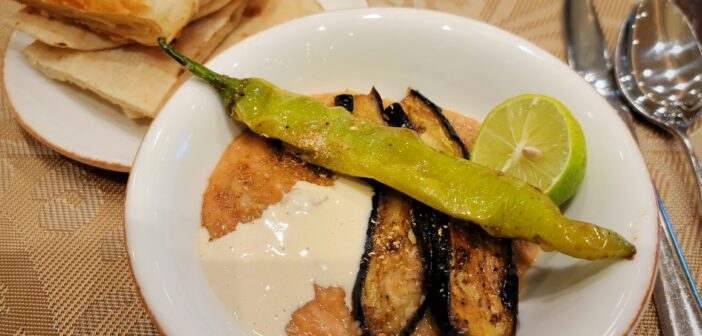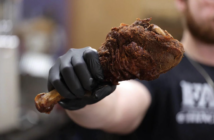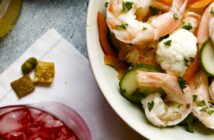by Chef Hari Pulapaka, Global Cooking School, and Stetson University
I’ll soon turn into the product of the number of dimensions of our existence and the average of the first two perfect numbers. While no mortal is perfect, I’m content to be an average of perfects and still perceptive of length, height, and depth. On the other hand, Ful, the quintessential dish indigenous to many countries in the Middle East and Africa is pretty close to gastronomic perfection, while offering a multi-dimensional culinary template for amateur and professional cooks, alike.
It was past midnight as our Air France jet lumbered into Cairo International Airport. As we were to soon find out, Uber is easy and responsive in Cairo. By 2 am, we had zipped through New Cairo, Old Cairo, across the mighty Nile over to Giza–Cairo’s sister city to the West–and checked into our hotel, excited, fatigued, and grateful. At breakfast, we were urged to dine on the right side of the dining room because that was the “Western” side with the usual suspects–egg-cookery station, brown discs and links vaguely resembling meat, baked goods, pastries, fruit, pancakes, blah-blah-blah…My shifty eyes and nose detected the copper damasa with its wafting aromas on the “Egyptian” (their words not mine) side of the dining room. Someone said “Sabaah-ul-Khayr”, reasonably assuming that I spoke Arabic. I don’t, but I was able to mumble “Marhaba” and “I’m sorry my Arabic is not good.”
Shortly thereafter, Jenneffer and I were immersed into bowls of warm, slow-simmered, Ful–garnished with cumin powder, Baharat, garlicky tahina (tahini), spicy green chiles (they had the heat of serrano and flavor of Hatch), parsley, tomatoes, olive oil, and the omnipresent Egyptian whole wheat flat bread Aish Baladi. While it’s not unique, I cannot think of a more satisfying way to start the day. Imagine baked beans, but with the depth of history and bountiful flavor one would expect from that old soul – Egypt. But wait, what is ful, exactly? I’m not sure there is an exacting definition of ful (also ful medamas), but at the very least, it is a stew of fava and/or other beans cooked in olive oil with cumin. After that, a traditional version would be as above. In my recipe, I break tradition, not to be disrespectful, but rather, to pay homage to the versatility of this deeply satisfying dish with roots discovered as early as the 12th dynasty (1991-1783 BCE) of ancient Egypt belonging to the seven kings of Thebes.
The plant-based and plant-forward movement in countries trying to balance diets for a myriad of reasons ranging from health to impacts on the planet and climate are largely focused on inventing “meat-like” plant-based substitutes. There is no denying the importance of these innovations because a Chick-fil-A diehard is more likely to try a beyond impossible version of the chicken sandwich than, say, a ful-patty sandwich, citing inappropriate texture and flavor as the main turn-offs. I get that. A ground beef burger differs in texture from a ground chicken burger and certainly from a black bean burger. Increasingly, food science advancements are making feasible simulations of many aspects of an original to commercial replications for a better substitute. Yet, often, resistance comes from a fundamental aversion to change. Imagine, instead, an introduction to naturally plant-based classics and boundary-traversing accents.
I’m thinking of a Ful Creole. Notwithstanding the smooth-as-tahini run off the lips, and that a Google search reveals nothing of substance (how could that be?!), I’m sure my friend Chef Frank Brigtsen of the longstanding and much lauded New Orleans restaurant owned and operated by Marna and Frank Brigtsen would approve. That’s because Chef Frank embraces the power of global influences on the flavor of food even while remaining deeply grounded in the food of his home and professional training. Chefs, be like Chef Frank.
Get started with Chef Hari’s recipe for Ful Creole.
PS: The answer to the enigmatic first sentence of this piece is 57.




